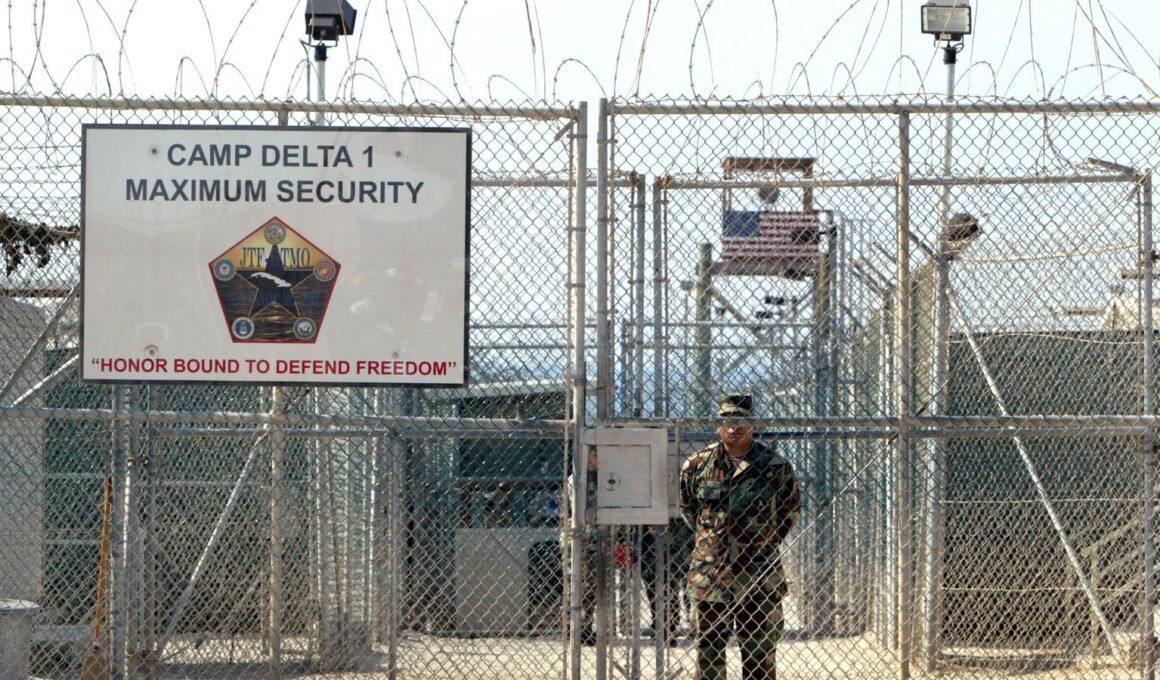Topline
The Department of Defense said three Guantanamo Bay inmates accused of plotting the Sept. 11 terrorist attacks have agreed to plead guilty, including Khalid Sheikh Mohammed, widely known as the mastermind of the attacks, 16 years after they were charged for their alleged roles in planning them.
The Pentagon said three Guantanamo Bay inmates, including Khalid Sheikh Mohammed, agreed to enter … [+]
Key Facts
The Pentagon announced the three inmates—Mohammed, Walid Muhammad Salih Mubarak Bin ‘Attash and Mustafa Ahmed Adam al Hawsawi—agreed to enter guilty pleas, though the terms of those pretrial agreements were not made public.
The three inmates are expected to enter those pleas as early as next week, the Associated Press reported, while in return the three men are expected to receive life sentences, The New York Times reported.
Mohammed, a former top member of Osama bin Laden’s terrorist organization al-Qaeda, was captured in Pakistan in 2003 during a pre-dawn raid—the arrest of a disheveled Mohammed was captured in a photograph that became one of the most iconic images of the U.S. war on terror.
He had initially been charged with terrorism, conspiracy, murder in violation of the law of war, attacking civilians, deliberately causing serious bodily injury and destruction of violation of the law of war—he was re-charged in 2012 after former President Barack Obama initially attempted to close the Guantanamo Bay detention center in a U.S.-held area of Cuba.
In 2012, the three men were charged, along with Ali Abdul Aziz Ali and Ramzi Binalshibh, with the Pentagon saying all five men were “responsible for the planning and execution” of the attacks on the World Trade Center in New York City and the Pentagon near Washington D.C.—as well as the hijacking of a fourth plane that crashed in Shanksville, Pennsylvania.
Get Forbes Breaking News Text Alerts: We’re launching text message alerts so you’ll always know the biggest stories shaping the day’s headlines. Text “Alerts” to (201) 335-0739 or sign up here.
Big Number
2,977. That’s how many people were killed in the Sept. 11 attacks, including passengers on the hijacked planes, emergency responders, workers in the World Trade Center and at the Pentagon, according to the 9/11 Memorial & Museum.
Key Background
Mohammed, seen as a mastermind of the attack, had been involved in al-Qaeda’s propaganda arm for several years at the time of the Sept. 11 attacks—which followed a string of terrorist attacks by militant groups based in the Middle East. Before the Sept. 11 attacks, al-Qaeda had claimed responsibility for the1998 bombing on the U.S. embassy in Nairobi, Kenya, and its 2000 strike on the USS Cole, a missile destroyer. Mohammed had met with bin Laden throughout the mid- to late-1990s, with one of his early planned meetings prompting the U.S. to request the Qatari government to arrest him. Mohammed then fled to Afghanistan. Mohammed has been in U.S. custody since 2003, though his terrorism case has faced scrutiny over torture by CIA officials. Mohammed was initially held at CIA “black sites” and was tortured at least 183 times while being held in Poland before his transfer to Romania, and ultimately to Guantanamo Bay (the CIA acknowledged it had waterboarded Mohammed, a form of torture, according to the Human Rights Watch).
Further Reading
“>








